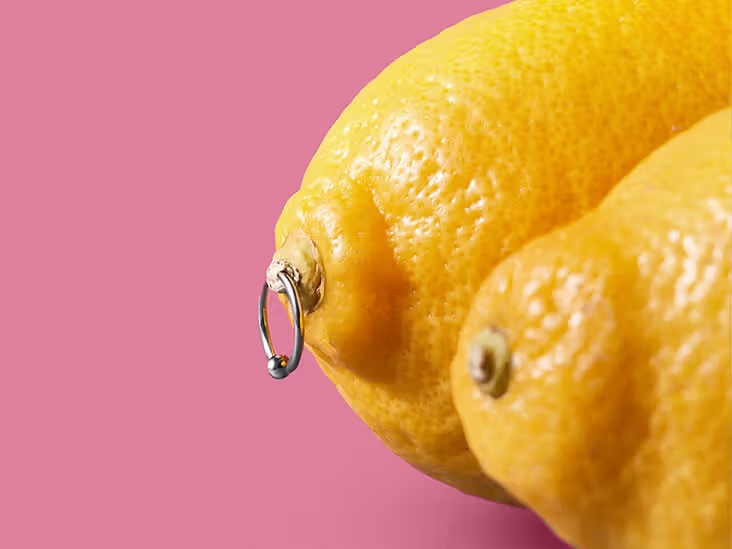A Prince Albert piercing (PA) can be an exciting personal choice, but it requires careful aftercare to avoid complications like infections or irritation. Whether you’ve just had the piercing done or are planning to get one, following proper care practices is essential for a smooth and healthy healing process.
Read Also: Prince Albert Piercing: All You Need To Know
What to Expect After Getting a Prince Albert Piercing
Immediately after the piercing, you may experience:
- Swelling around the entry and exit points.
- Mild bleeding in the first 24-48 hours.
- Sensitivity or discomfort when urinating.
- A slight change in your urine stream (which will improve as it heals).
These symptoms are normal in the early stages. However, following a strict aftercare routine will minimize complications and speed up healing.
Step-by-Step Guide to Caring for a Prince Albert Piercing
1. Clean the Piercing Twice a Day
- Use Saline Solution: Clean the piercing with a sterile saline solution (or sea salt water).
- How to Apply: Soak a clean gauze or cotton ball in the solution and gently dab it around the piercing site.
- Avoid Harsh Products: Don’t use alcohol, hydrogen peroxide, or scented soaps, as they can irritate the wound.
Pro Tip: You can make your own saline solution by mixing 1/4 teaspoon of non-iodized sea salt with 1 cup of warm distilled water.
2. Urinate After Cleaning
- Flush the Piercing Naturally: Urinating after cleaning the piercing helps rinse out the urethra, preventing bacteria buildup and reducing irritation.
3. Wear Loose, Breathable Clothing
- Why it’s Important: Tight clothing can rub against the piercing, causing irritation or delaying the healing process.
- Best Options: Wear breathable underwear (like cotton) and loose pants to allow airflow and minimize friction.
4. Avoid Sexual Activity During Healing
- Initial Abstinence: Avoid sexual intercourse for the first 2-4 weeks to prevent irritation, bleeding, and infection.
- Use Protection: When resuming sexual activities, use condoms to protect the piercing from bacteria and reduce friction.
5. Monitor for Signs of Infection
Look out for:
- Excessive redness or swelling beyond the first few days.
- Pus or foul-smelling discharge from the piercing.
- Fever or chills, which could indicate a more serious infection.
If you experience any of these symptoms, contact your piercer or a healthcare professional immediately.
What to Avoid While Healing
- Don’t Touch or Twist the Jewelry
- Hands Off! Avoid touching the jewelry unnecessarily, as this can introduce bacteria.
- No Twisting: Unlike some piercings, twisting the jewelry can delay healing and cause irritation.
- Avoid Submerging in Water
- Skip Pools, Hot Tubs, and Lakes: These can introduce bacteria, leading to infections. Showering is safe, but be mindful to rinse the area well.
- No Alcohol or Smoking
- Why it Matters: Alcohol and smoking can slow down the healing process by impairing blood circulation and tissue repair.
How Long Does it Take to Heal?
- Initial Healing: 4 to 6 weeks.
- Complete Healing: Up to 3 months, depending on individual factors like lifestyle and care practices.
Best Jewelry for Healing Prince Albert Piercing
- Curved Barbell: Reduces pressure and allows better movement during healing.
- Captive Bead Ring (CBR): Some find it comfortable, but it may shift more than a barbell during healing.
Stick with the jewelry used during the initial piercing until fully healed. Changing jewelry too soon can cause irritation or infections.
How to Deal with Swelling or Discomfort
- Cold Compress: Apply a clean, wrapped ice pack to the area to reduce swelling.
- Ibuprofen or Anti-Inflammatories: If needed, take over-the-counter pain relief (consult your doctor first).
- Elevate the Area: When sitting or lying down, try to elevate your legs slightly to improve circulation.
FAQs About Prince Albert Piercing Aftercare
1. Can I Clean the Piercing with Soap?
It’s best to use unscented, antibacterial soap if you prefer soap. However, saline solution is more gentle and recommended for everyday cleaning.
2. What Happens if the Piercing Bleeds?
Light bleeding is normal for the first few days. If bleeding persists or worsens, consult your piercer.
3. How Do I Know if the Jewelry is Too Tight?
Swelling can make jewelry feel tight, but if the jewelry causes pain or leaves an indentation, contact your piercer to discuss resizing.
4. Can I Change the Jewelry Before Healing is Complete?
No. Wait until the piercing has fully healed (3 months) before changing jewelry to avoid complications.
5. What Should I Do if the Piercing Becomes Infected?
If you suspect an infection, clean the area with saline, avoid touching the piercing, and contact your healthcare provider for advice.
Conclusion
Proper care is essential for a smooth recovery from a Prince Albert piercing. Cleaning the piercing regularly, avoiding sexual activity during the healing phase, and monitoring for signs of infection are crucial steps to ensure optimal healing. Patience and attention to hygiene will make the healing process easier and minimize complications.
With the right care, your piercing will heal beautifully, and you’ll be able to enjoy the unique look and feel of your Prince Albert piercing in no time.

[…] Albert Piercing Jewelry Options: Choosing the Best Fit How to Care for a Prince Albert Piercing: Complete Aftercare Guide October 14, […]